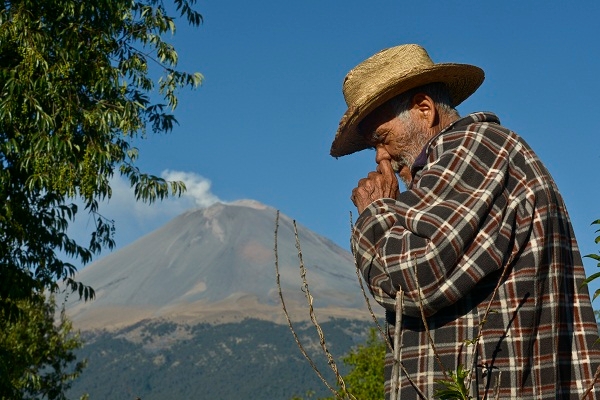Gone to the Forest is Katie Kitamura’s second novel, about a family and the cost of European colonization in an unknown time and place.
Tom and his father live on a farm in a country that recalls, at first and most often, J.M Coetzee’s South Africa. It is on the brink of civil war. The novel opens with a broadcast by the land’s natives, which Tom overhears on a radio that has been left, eerily, on the homestead’s verandah.
The men’s strained relationship is compounded when a sly young woman, Carine, comes to live with them. Their sinister dealings with each other, the other white farmers and servants expose the fissures of a hard and unforgiving society, which threaten to engulf them all.
Kitamura writes with fine tension and clipped grace. Her observations are subtle and sharp. The volcano’s importance in the story evokes Aimé Césaire’s poem Corps Perdu, which begins ‘Moi, qui Krakatoa…’ and is a soaring command, in the wake of decolonization, for ‘the islands to be’.
Kitamura’s first novel, The Longshot, about a mixed martial arts fighter, was shortlisted for the New York Public Library’s Young Lions Fiction Award. The rising literary star was educated at Princeton University and the London Consortium. She lives in New York.
Tell us about Gone to the Forest.
The novel is very different from my previous book, The Longshot, but it has the same concerns about masculinity. It’s a story about the conflict between a father and son living on a farm in an unnamed colonial country, as a rebellion is growing around them.
Where did the story come from?
The novel is set in a deliberate amalgamation of multiple historical settings, all of them colonial. There are elements of Kenya, India, Argentina, Zimbabwe. I wanted to create a collage, because it felt like this might be a useful way of looking at the legacy of colonialism — through fragments that are reconstituted, rather than through a singular, decisive narrative.
Your first novel earned you a comparison to Hemingway (by author Tom McCarthy). Was he a conscious influence, and who are some others?
Hemingway is not an especial influence. There are a number of female writers that I admire tremendously, some of whom are working today — Elfriede Jelinek and Herta Muller are two examples. I’ve also been reading a lot of Javier Marias.
Will you be involved in Peter Berg’s film adaptation of The Longshot?
It’s in the very early stages of development, but I am writing the screenplay. I think when you’re writing a screenplay, even when it’s an adaptation of your own work, it’s important to remember that you’re not doing anything more than providing a road map for someone else. When you’re writing a novel, you exert total control over the material, but if you’re taking part in making a film, you necessarily give over that control.
What compelled you to begin writing fiction?
I think the one thing that all writers have in common is that they read a lot, and have always read a lot. At a certain point, it becomes all you know.
What are you currently writing?
I’ve started work on a third novel, which will have elements of psychological horror and feminist science fiction.
Gone to the Forest is published by Free Press, Simon and Schuster.






Comments